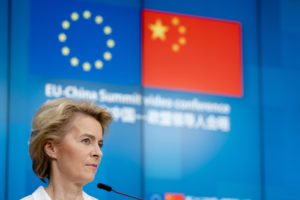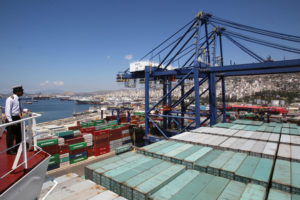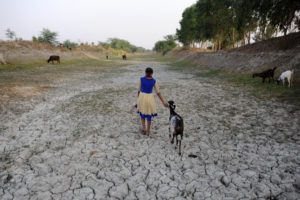In recent months China Dialogue has published a series of articles on China’s changing relationship with Europe. Various factors have shaped convergence and divergence in their relations. While the United States reconsiders its position, the European Union (EU) and China have led the way in backing the 2015 Paris Agreement. The last year has seen landmark announcements on their respective plans to reach carbon neutrality by 2050 and 2060, and they are now due to update their 2030 targets in their Nationally Determined Contributions (NDCs) towards the Paris Agreement. Implementation of the European Green Deal and China’s upcoming 14th Five-Year Plan (FYP) for 2021-25 will determine whether this transition is accelerated and sets a bar for global ambitions. While there have been commitments to climate cooperation, tensions over economic competitiveness, market access and human rights have also spilled over, and there is a risk that systemic rivalries as well as domestic interests in the post-coronavirus recovery could derail progress.
Download the brief
This policy briefing summarises the key policy drivers for decarbonisation in China and the EU, and analyses where synergies could enhance action and gaps could limit progress. Literature and official statements were reviewed, and several experts were interviewed to draw out the following recommendations.
Recommendations
Strategic visions: The EU’s Green Deal and China’s concept of ecological civilisation reflect markedly different worldviews, but should also underpin strategic understanding on the basis that they both present visions for achieving renewed sustainable growth through technological innovation and greener societies.
Carbon neutrality goals: By setting ambitious 2030 goals, the EU should continue to press China to reach peak emissions more quickly by reducing coal consumption. Both parties should draw on each other’s experiences of negotiating transitions with fossil-fuel dependent member states and provinces.
Carbon neutrality goals: By setting ambitious 2030 goals, the EU should continue to press China to reach peak emissions more quickly by reducing coal consumption. Both parties should draw on each other’s experiences of negotiating transitions with fossil-fuel dependent member states and provinces.
Carbon markets:The EU should carefully consult trading partners on its proposed carbon border adjustment mechanism, alongside providing support to China to develop its own nascent carbon market, with a view to progressing towards a minimum set of rules for a global emissions trading infrastructure.
Energy transitions: In scaling up renewables and reforming energy systems, the EU and China should ensure that opportunities are kept open for policy and technology cooperation where beneficial, while also maintaining high-level dialogue to prevent trade disputes from hindering progress towards decarbonisation.
Circular economies: As China and the EU both look to promote circular economies, they should aim to align production standards and share best practices for reuse, repair and recycling to pave the way for wider decoupling of development from climate change.
Land-use planning and biodiversity: The EU should work with China to encourage greater ambition in the biodiversity COP15 and climate COP26 in 2021. Integrated strategies for climate and ecological challenges should draw lessons from China’s experience of consolidating land-use planning and nature-based solutions.
Sustainable finance and commodity supply chains: Financing green recoveries and promoting sustainable commodities globally will require coordinated multilateral responses. The EU should engage China to promote stronger transparency and environmental, social and governance norms for mobilising investment.
Please download the full PDF brief here or scroll the embedded version below. For more coverage please visit our dedicated page on China’s Changing Relationship with Europe.








